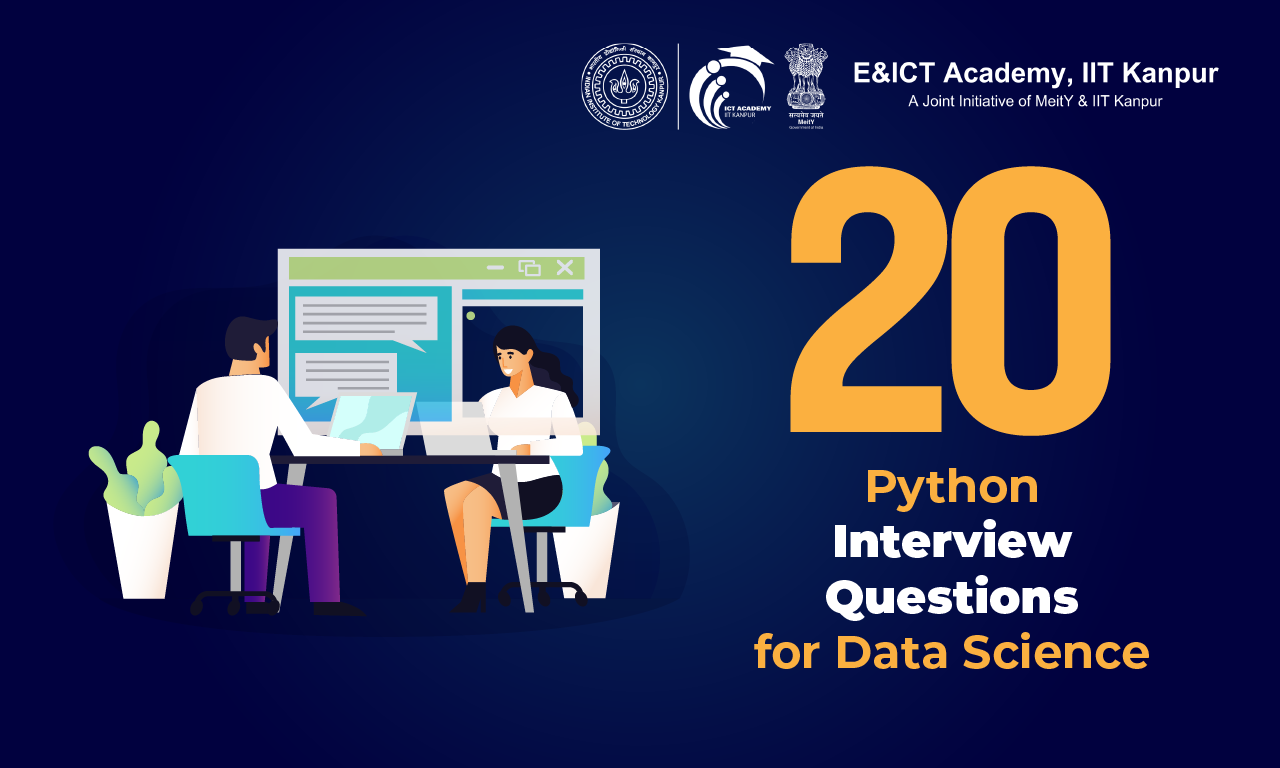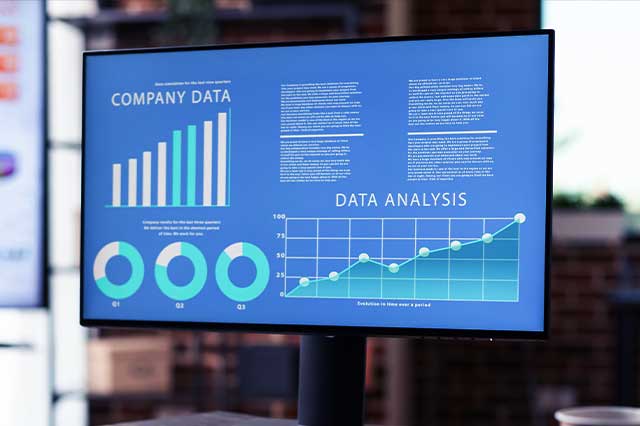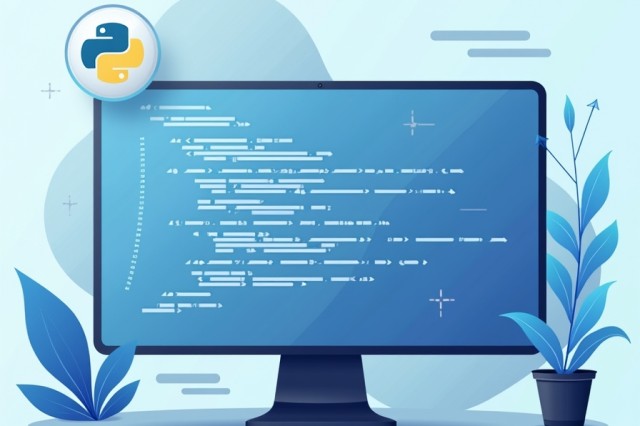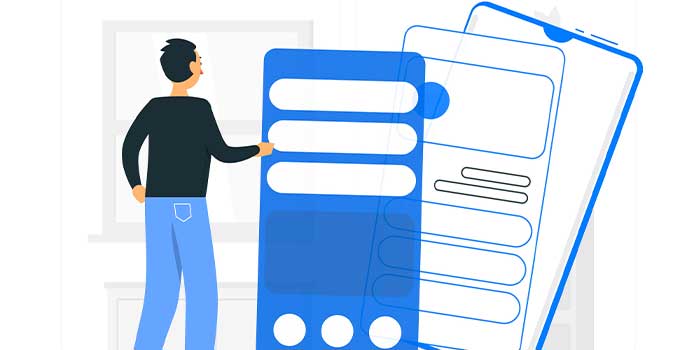20 Python Interview Questions for Data Science

Python Interview Questions for Data Science: Mastering Python is considered one of the most critical steps an aspiring data scientist can take to stand out in the world of data science. Besides training predictive models, Python is an important tool needed for simplifying the role and responsibilities of data science in quite a simpler way, such as the analysis of enormous volumes of data sets and extracting valuable insights.
Data science can be the most rewarding career path, and getting into this field opens possibilities for a flexible career. It can increase your earning potential while providing several opportunities to grow your skills.
Enroll Today in Best Python Program for Beginners in 2024
So, if you’re planning to enter the world of data science and want to prepare with the best Python data science interview questions, then you have landed at the right place.
Prepping Up for the Best Interview
As there’s always a long queue for data science jobs, it would be wise to be prepared well before appearing for an interview. You will feel more confident and increase your chances of landing the job. Preparing the right set of Python interview questions for data science can help you showcase your expertise and skills, making a strong impression. It can also set you apart from other job seekers and increase your value as a professional among the crowd of job seekers.
20 Python Questions and Answers to Prepare for the Best Data Science Interview
As there’s always a long queue for data science jobs, it would be wise to be prepared well before appearing for an interview. You will feel more confident and increase your chances of landing the job. Preparing the right set of Python interview questions for data science can help you showcase your expertise and skills, making a strong impression. It can also set you apart from other job seekers and increase your value as a professional among the crowd of job seekers.
Question 1: What is the purpose of Python in data science?
Python is favored in data science because of its adaptability and extensive ecosystem of libraries, such as Pandas and NumPy. It is also widely used because it reduces the complexity behind various tasks, including training predictive models, interpreting results, data analysis, cleansing, and many others.
Question 2: Why is Python called an object-oriented language?
As Python supports the principle of object-oriented programming (OOP), it is recognized as an object-oriented language. Python supports polymorphism, inheritance, and encapsulation and presents everything as an object. Such as the data types and functions of Python programming allow developers to create reusable, modular code through classes and objects.
Question 3: Name a few built-in data types used in Python.
Some of the most usable inbuilt data types available in Python are: str for string, int for integer, float for floating point number, bool for Boolean values, set for set, dict for dictionary of key-value pairs, bytes for bytes, and array for array.
Question 4: Is there a difference between mutable and immutable data types?
The only difference between mutable and immutable data types is that you can modify mutable data types after creation, while in the case of immutable data types, you cannot.
Question 5: Can you name a few mutable and immutable objects?
Yes, list, dictionary (dict), set, and byte array are mutable objects, whereas int (Integer), float (floating point number), bool (Boolean), and str (String) are immutable objects.
Question 6: Can you delete a file in Python? If yes, how?
You can use Python to delete a file with os.remove(). First, you have to import the os module, then use os.remove(“filename”), where “filename” is the path of the file you want to delete.
Question 7: What are some of the most important features of Python?
While there are many features to consider, here are some of the most essential ones in Python:
- Can support functional and structured programming
- Ideal for beginners for its simplicity and readability
- Can be used to develop high-end data types
- Offers cross-platform compatibility
- Offers an environment for quick development and debugging
Question 8: What is Regex?
Regex (Regular Expression) in Python is a sequence of characters defining a search pattern for matching, searching, and manipulating strings. Python’s re-module provides functions such as match(), search(), and findall() for handling regex operations.
Question 9: Is there a code snippet to delete an entire list in Python?
Yes, an entire list can be deleted in Python using the clear () function. The code should be inserted as follows: list1= [1, 2, 3, 4] List1.clear ()
Question 10: What are the common types of files that can be used in Python for data analysis?
If you perform data analysis with Python, you can use the following common types of files in the process:
- Text (.txt)
- SQL database
- Pickle
- CSV
- Excel
- HDF5
- JSON
- Parquet
Question 11: Is memory deallocated when you exit a Python program?
Yes, the memory allocated during runtime is deallocated upon exiting Python. The program uses a built-in garbage collector that cleans up and frees up the memory of unused objects. The memory used is then reclaimed by the operating system when the program is no longer running.
Question 12: Name a few common libraries used in Python for data analysis.
One of the most common Python interview questions for data science experienced professionals and freshers involves Python’s libraries. The program has many libraries, and some important ones include:
- NumPy
- Pandas
- Matplotlib
- SciPy
- Seaborn
- Statsmodels
- Scikit-learn
Question 13: Can you explain negative indexing in Python?
In Python, negative indexing enables access from the end of the sequence, be it a list or string. For example, my_list[-1] refers to the last element, my_list[-2] to the second last, and so on. This method makes it easier to reach elements relative to the end of the sequence without needing to know its length.
Question 14: How can you find duplicate values in datasets using Pandas?
You can find duplicates in datasets using Pandas; use df.duplicated() to identify them and df[df.duplicated()] to view them. If you want to remove duplicates, use df.drop_duplicates().
Question 15: Define list comprehension in Python.
List comprehension in Python is a concise way of creating lists in just one line. It combines a “for loop” and “conditionals” in square brackets. For example, the list of squares of even numbers could be obtained as follows: [x**2 for x in range(10) if x%2 == 0].
Question 16: Can you explain the lambda function in Python?
In Python, a lambda function is a small anonymous function that can be defined with the keyword lambda. It can take any number of arguments but can have only one expression. The syntax is lambda arguments: expression. Example: lambda x: x*2 returns a function that doubles its input.
Question 17: What does PEP 8 stand for?
PEP 8 stands for “Python Enhancement Proposal 8.” It is a Python coding style guide that lists conventions on how to format a Python code. Hence, it is more readable and consistent in terms of naming conventions, indentation, and line length.
Question 18: Define decorators and generators in Python.
In Python, decorators modify or extend other functions using the @decorator syntax. Generators are functions that use the yield keyword to return values one at a time, thus enabling iteration efficiently without needing to load everything into memory at once.
Question 19: What is a pass statement in Python?
In Python, the pass statement allows the use of a placeholder where the language syntax requires a statement, but no code execution is necessary. It executes the code without errors when any function or class is incomplete.
Question 20: Can you explain a few limitations in Python?
Python does have a few limitations, such as:
- Python can run a bit slower compared to other programming languages like C++ since it is an interpreted language.
- It has a limitation for system-level programming and low-level operations.
- Python’s performance in mobile app development lags behind languages like Kotlin and Swift.
| Related Data Science Articles | |
|---|---|
| Top Python Libraries for Data Science in 2024 | Data Science in Public Sector |
| Growing Demand for Data Science | The Demand of Data Science in the Futures |
Conclusion
Preparing yourself with a few of these commonly asked Python interview questions in the field of data science is all one needs to do to ace even the toughest interview. You’ll walk in with a new, confident air and nail that dream job. If you want to know more about Python or want a comprehensive data science course to advance your skills and knowledge, reach out to us today.
Recommended Courses

Advanced Excel & Data Visualization for Business Success

Business Analytics

Professional Certificate Course in Data Analytics and Generative AI

Professional Certificate course in Data Science

Professional Certificate Course in Data Science

Python for Data Science



